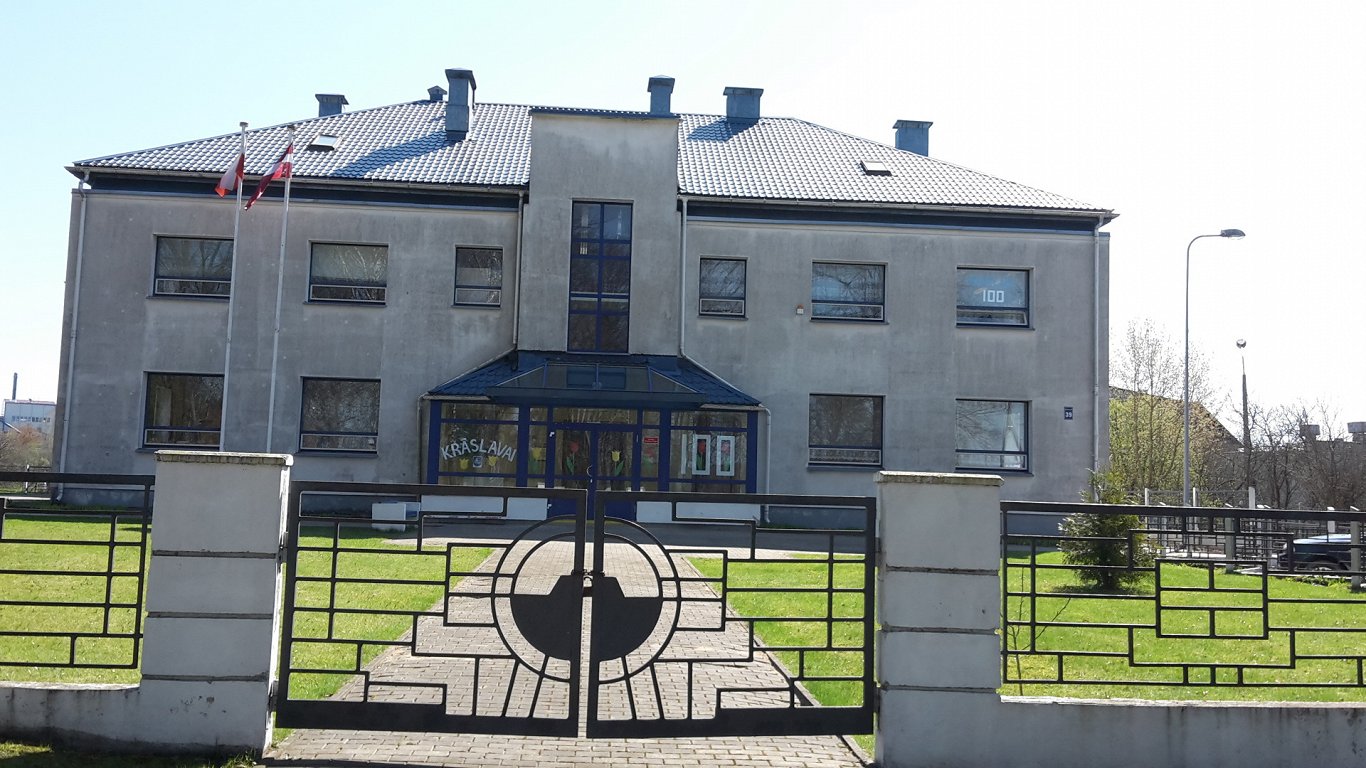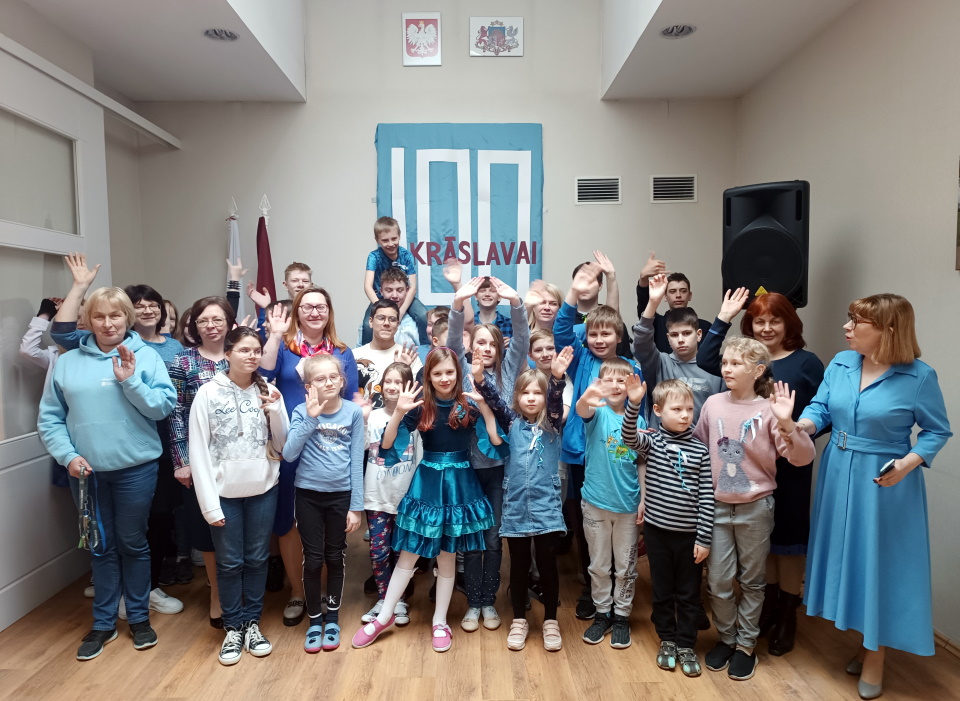The school, named after Count Plater, is small and cozy, with modern equipment. "We are a big family, because in a small school, the atmosphere is always warm and family-like. We currently have 45 pupils and 22 employees. Thirteen of them have the school as the main workplace. Of course there are few students. And it is the root of all problems, even if there is a growth: last September there were 39 children," the school's deputy principal Aļona Čiževska told Rus.LSM.
"At the end of the last century and the beginning of this century, there were 90 children at the school. But then demographic issues began all over the country. There have been talks about closure since 2009, especially in 2016. But every time the municipality and Poland found a common stance," Čiževska said.

Poland actively participates in school life. Polish language is taught by native speakers. Pupils also learn Polish history, culture, traditions. Poland finances their first school bag with the essentials, and their parents get a grant of about EUR 150. Poland also supports events in Polish tradition, and funds the school's utility bills and stationery.
According to the principal, 70% of the pupils have Polish roots. The municipality said that Polish passports are held by 16% of the pupils. Throughout the years, 123 of the students have graduated year 9 in that school. About a quarter went on to Polish high schools in Daugavpils and Rēzekne, a few moved to Poland, whereas about 75% go on to Latvian high schools and vocational schools. Very few choose the local minority school.
Lidija Miglāne, Head of the Education Administration of Krāslava, commented on the situation as follows: "The deputies adopted a final decision on school closure, which should take place on August 31. We sent the documents to the Ministry of Education and Science, but there is no answer yet. There are very few pupils in school, even if we put lower demands because the school is in the border area, we need at least 70 children. The school costs 180 thousand euros a year to the municipality; Poland gave 28 thousand euros last year. Such a school is becoming a luxury we can't afford.
"There are many problematic schools in the municipality of Krāslava with a small number of pupils. Often, the school is the only one in the village. How can we close schools like this, but keep an even smaller school in the center of town when there are other schools nearby? We offer children to move to the Varavīksne High School [minority school], where they will be able to learn Polish and other subjects related to Polish culture."
But both the Polish school teachers and student parents are categorically opposed to moving children to the Varavīksne High School.
"Similar experience was in Jēkabpils – the Polish school was transferred to the State gymnasium. At first, the Polish component held on, but then dissolved. And there are no more Polish schools in Jēkabpils. We do not want to repeat its fate. ll parents signed a letter to the City Council at the end of March, and we were supported by the Krāslava section of the Latvian Union of Poles, "Strumeņ". We are against closing our school!
"And hope remains – no, not for a miracle, but for Poland. A meeting of the Latvian Union of Poles took place very recently, I was in it. The Union is also opposed to a decision on closure. Mariusz Podgórski, head of the consular division of the Polish Embassy in Latvia, confirmed to me that the embassy was looking for ways to solve the problem.
"We don't want to destroy our small, carefully constructed world, which we cherish for more than 30 years now. The Polish school is one of Krāslava's cherries on top, if it's not here, then there will be no Polish culture here either," said Čiževska.
The Polish Embassy in Latvia commented:
"Count Plater School is a teaching establishment that is of interest to many institutions, including at the highest level, in Latvia and Poland. Thanks to the efforts of the Polish State, special funding dedicated to the maintenance of the school has been allocated, and for many years these funds have been transferred to the municipality.
"The embassy of the Republic of Poland in Latvia participates in measures aimed at improving the situation of the Polish school in Krāslava and is in constant contact with all stakeholders in Latvia, both at the central and local level, in order to develop an optimal way forward for the future functioning of the school. We are convinced that we will find an appropriate solution to provide children living in Krāslava with the opportunity to learn Polish in agreement with the municipality of Krāslava and the State of Latvia."
It is known that in the 1925 census, when Krāslava first had city status, there was a total population of 4,485. Of these, 1716 were Jews, 984 - Poles, 833 - Latvians, 445 - Russians, and 428 - Belarusians. At the time, the Poles were 22 percent of the population. In 1930, when there were 4,283 residents in the city, there were 1266 Poles — 29.5 percent. Further on, the proportion of Poles gradually decreased, but in 2000, the Poles represented not less than ten percent of the population – 1,190 out of a total of 11,412 people. Now, of 7,289 people, around 7 to 8% are Poles.





























